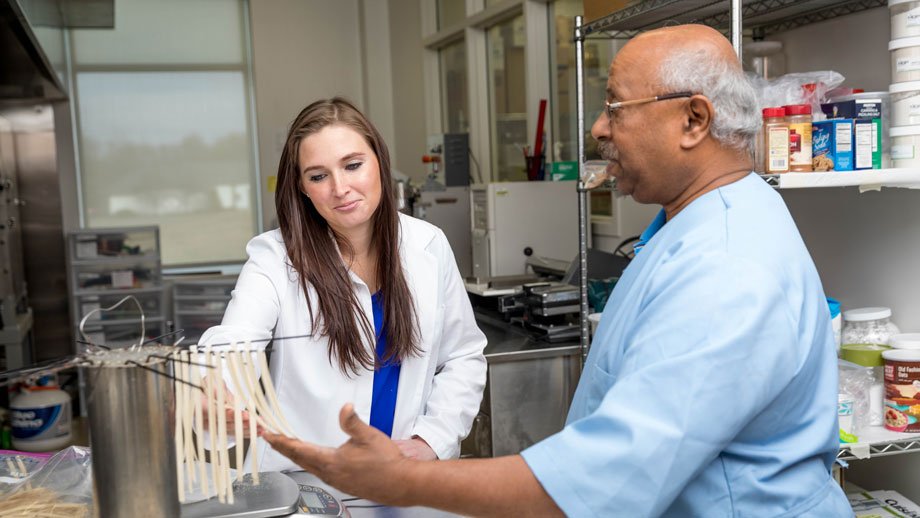
Professor Padu Krishnan of South Dakota State University’s Department of Dairy and Food Science received the 2020 Edith A. Christensen Award for Outstanding Contributions in Analytical Methodology from the Cereals & Grains Association. He is the first South Dakota State University faculty member to get the award, which recognizes the central role analytical methods play in cereal and grain research.
Krishnan has been a member of the Cereals and Grains Association, formerly known as the American Association of Cereal Chemists International, since 1984 when he was a graduate student at North Dakota State University.
“I am honored to receive this prestigious award,” Krishnan said. “This award recognizes my scientific contributions in analytical methodology, and service to the society through leadership for approved methods. It is a wonderful acknowledgement by peers from industry and academia. It is important to have the right metrics in assessing the quality of our food. We need the best science-based tools to ensure a safe and wholesome food supply which preserves confidence of the food consumer.”
At South Dakota State, Krishnan has spearheaded efforts to improve the nutritional and end-use quality of wheat and oats through his cereal quality laboratory in SDSU’s Young Brothers Seed Technology Laboratory on the Innovation Campus. In addition to collaborating with SDSU wheat and oat breeders, Krishnan has worked with national food companies, including General Mills, Grain Millers Inc., Quaker Oats Company, Nestlé Food Company and Schwan’s Company.
He also receives U.S. Department of Agriculture National Institute of Food and Agriculture and Hatch funding through the South Dakota Agricultural Experiment Station.
Krishnan and his graduate students have developed and continue to refine near-infrared spectrometer calibrations for evaluating the quality of oats. The NIR calibration allows researchers to measure beta glucan — the soluble fiber that gives oats its cholesterol-lowering power, fat and protein. This is done rapidly and simultaneously using a single analytical platform.
“Measuring multiple constituents simultaneously within seconds makes this a powerful decision-making tool for the breeder and the food processor,” Krishnan said. He is also formulating new oat products, such as beverages, breads and butter, with improved texture and taste that takes oats beyond the breakfast aisle.
He also developed a process of converting dried distillers grain from corn ethanol plants into a food-grade product that can fortify baked goods to increase their protein and fiber content. He has integrated food-grade DDG into everything from Chinese steamed bread to flat breads and cookies.
In addition, Krishnan has published research on new methods of measuring folic acid in food and new ways to estimate bread loaf volume, which he refers to as “the holy grail of the baking industry.”
Republishing
You may republish SDSU News Center articles for free, online or in print. Questions? Contact us at sdsu.news@sdstate.edu or 605-688-6161.

